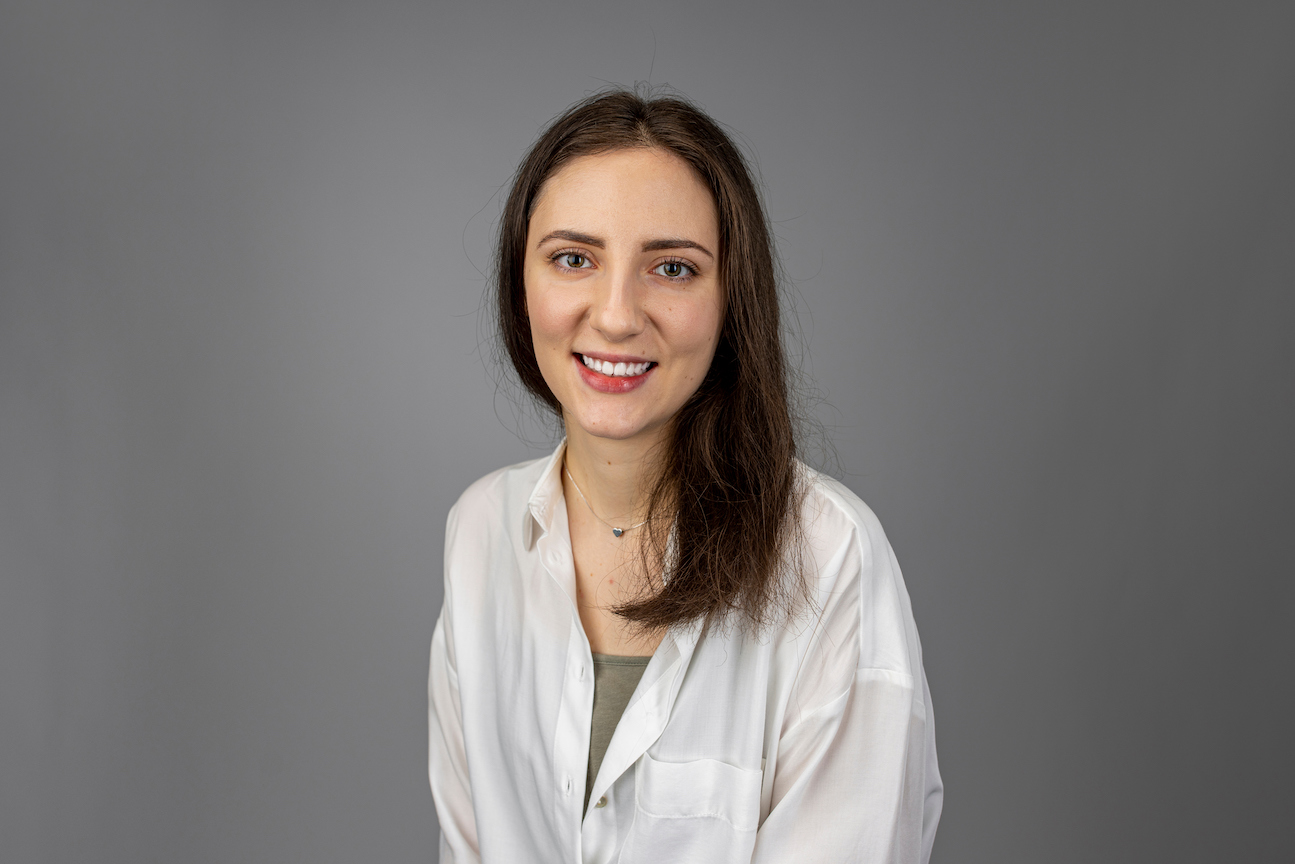A graduate’s view on revealing invisible data
Inaugural Class of 2022 feature
Monday, December 05, 2022
From an early age, Svetlana Maslenkova shared a love of knowledge and curiosity that would see her broaden her education from a small rural town in Russia to the world’s first, graduate artificial intelligence university where she discovered her passion for data and helping others.
I wanted to do something applicable to real life...
Class of 2022 graduate
“I wanted to do something applicable to real life or something where you can see the results quickly; not something very theoretical,” she said. “I also wanted to do NLP or tabular data. A lot of professors focused on the computer vision side of AI. And for me, I wanted to work with tabular data and or textual data.
“I met with different professors (at MBZUAI) and Dr. (Mohammad) Yaqub was one of them. He already had some ideas and projects about healthcare using tabular data, and so I decided to start this project on earlier detection of kidney failure. It’s something you can see the results, something that you can hopefully deploy and help people, and that will also make a difference in the long term.”
Tabular data is the simpler data that you can feed to a machine learning model, represented in a table with rows and columns, and can be used with deep learning models. Yaqub is an Assistant Professor of Computer Vision and runs the BioMedical Image Analysis (BioMedIA) lab, which Maslenkova was a part of during her two-year master’s degree.
“Pictures and images are cool to work with but, for me, what’s interesting is you can have tabular data or text, and you don’t see what it means from the beginning,” she describes. “With a picture of a cat, it’s a cat, but with a huge table you don’t see anything unless you deep dive into it. You must plot some figures, statistics and find something that you would not be able to see just looking at the data.
“For example, in my master’s project, I found out that the distribution of the weight of patients was a factor in having more severe kidney failure after plotting the median weights of the patients.” It’s this invisible data that Maslenkova is passionate about finding through her own models with the aim of helping others.
.
Building models and risk prediction algorithms for acute kidney injury (AKI)
Her thesis, titled “Predicting of Acute Kidney Injury using Electronic Health Records”, presents a crucial yet challenging task. The early prediction of AKI could support clinicians and enable them to pay more attention to at-risk patients instead of reviewing mountains of information related to patient visits. This could help prevent adverse outcomes for more than 13 million people per year globally, which results in 1.7 million deaths.
Maslenkova started the project with limited data from electronic health records (EHR) – the publicly available EHR database MIMIC-IV v1.0. During her research, they released a newer version that was ultimately used for the basis of study (v2.0).
“I developed and built the models on one dataset, but then they released the new version, which had other data such as urine output and weight of the patients,” she said. “This was very important for my research, and so I reprocessed all the data from the beginning. I focused on a short-term perspective, and it was important to create a successful AKI detection algorithm to obtain data labels for supervised models’ learning.”
The EHR database MIMIC-IV v2.0 was used to develop an AKI risk prediction framework for patients admitted to intensive care units (ICU). The framework includes the algorithm for AKI detection from creatinine value and urine output, as well as the prediction of next-day AKI onset from the data collected on the first day in the ICU. The AKI prediction task was implemented for three different granularity levels: predicting an AKI onset of any stage, predicting the AKI onset of stages two and three, and predicting the AKI onset of stage three, which is the most severe case.
Due to the imbalance of the given data, Maslenkova experimented with three balancing techniques. In addition to the classical machine learning approach with manual feature selection, she also explored an LSTM-based approach applied to the prediction of AKI. Due to the variety of data available for each patient, it is challenging to assess which information could be the best predictor. Thus, the text classification model used unstructured textual data to make predictions.
Maslenkova is part of MBZUAI’s first cohort and the inaugural Class of 2022 who will receive their degrees on January 30, 2023. She would like to continue her research on kidney failure prediction and has approached Sheikh Shakhbout Medical City (SSMC) in Abu Dhabi.
She feels she can make the biggest difference applying her machine learning and AI skills in the healthcare sector. Researching behavioral data for mental health is also an area she would like to explore. She believes it is a problematic area of society with little AI-related work being carried out other than Google’s DeepMind.
Looking to the future
Maslenkova is the first in her family to study abroad and the first to gain her master’s degree, despite coming from a long line of engineers including her mother, sister, grandmother, and grandfather.
“For me, MBZUAI was a dive into the unknown, but I was excited about it. It was tough but full of exciting moments and I’m excited about my next steps,” she continued. The now 23-year-old has been granted a Golden Visa in the UAE and is currently seeking opportunities to work as a data scientist.
Read her full thesis:
- “Predicting of Acute Kidney Injury using Electronic Health Records” by Sveltana Maslenkova
Related
K2: An open source model that delivers frontier capabilities
MBZUAI’s Institute of Foundation Models has released its latest version of K2 – a 70-billion-parameter, reasoning-centric foundation model.....
Read MoreWhy 3D spatial reasoning still trips up today’s AI systems
A new benchmark by MBZUAI researchers shows how poorly current multimodal methods handle real-world geometric and perspective-based.....
- neurips ,
- 3D ,
- spatial reasoning ,
- Vision language model ,
- benchmark ,
- conference ,
- research ,
Causality meets reality: CausalVerse gives AI a harder, fairer test
A new benchmark from MBZUAI blends realism with ground truth – revealing how well causal models understand.....
- causal representation learning ,
- research ,
- benchmark ,
- variables ,
- causality ,
- neurips ,
- conference ,


